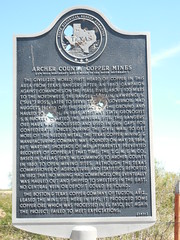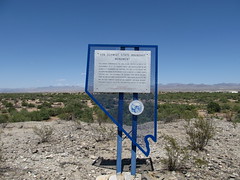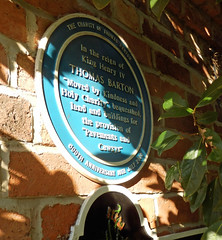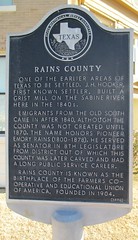Documenting the historical links between people and places as recorded by commemorative plaques
contribute
- You are all part of our mission to find all of the plaques in the world!
- Spotted one? Anyone can help us and add a plaque
- Take a photo. Add it to Wikimedia Commons or Flickr and link it to our record
- Spot an innaccuracy. Tell us.
Open Data
news
Follow us on Twitter and Facebook for updates.
Plaque Of The Day
Castle Bowling Green grey plaque
Jez says, "I love the fact that Lewes used to have a tilting ground, ie a place where jousting took place."
Place Of The Day
Norwich, United Kingdom
Norwich has a long history. It has been a city since 1094. From the Middle Ages until the Industrial Revolution, Norwich was the largest city in England after London and one of the most important. This is refelected in its plaques.
Most-viewed plaques
In the last 11 years, between 20 May 2009 to 6 Jan 2021, Open Plaques had 4,530,517 page views from 1,234,480 users. Some were triggered by internet memes such as Steve Ullathorne's 2012 image of a George Orwell plaque with a CCTV camera next to it. Others, such as those for Alan Turing, were probably triggered by an anniversary and campaign for recognition.
- George Orwell 1903-1950 novelist & political essayist lived here (19526 page views)
- Jacob von Hogflume 1864-1909 Inventor of time travel. lived here in 2189 (15077 page views)
- George Orwell 1903-1950 novelist and political essayist lived here (6390 page views)
- Jimi Hendrix 1942-1970 guitarist and songwriter lived here 1968-1969 (5714 page views)
- Alan Turing 1912-1954 founder of computer science and cryptographer, whose work was key to breaking the wartime Enigma codes, lived and died here. (4085 page views)
- Sir Arthur Conan Doyle 1859-1930 creator of Sherlock Holmes lived here 1891-1894 (3846 page views)
- Alan Turing 1912-1954 code breaker lived here from 1945-1947 (3679 page views)
- This building housed the offices of Charles Dickens' magazine 'All The Year Round' and his private apartments 1859-1870 (3339 page views)
- Dame Agatha Christie 1890-1976 detective novelist and playwright lived here 1934-1941 (3027 page views)
- The Peterloo Massacre. On 16th August 1819, a peaceful rally of 60,000 pro-democracy reformers, men, women and children was attacked by armed cavalry resulting in 15 deaths and over 600 injuries. (3006 page views)
recently photographed plaques
Sir Thomas Fowell Buxton BT. MP. 1786-1845 Buxton led the Parliamentary campaign responsible for the 1833 Act freeing the 700,000 slaves then held in the West Indies and elsewhere in the British Empire. Married into the Quaker Banking family of the Gurneys, he worked with Elizabeth Fry to improve conditions in prisons and reduce the number of crimes deemed worthy of the death penalty. He spoke at the Friends Meeting House in Norwich and used St Andrews Hall to organize meetings in favour of his various causes.
Upper Goat Lane, Norwich, United Kingdom
Subjects
In Saxon times this town was called Agmodesham The Domesday Book of 1086 records it as Elmodesham with three water mills in use along the banks of the Misbourne In the year 1200 King John granted Aversham the right to hold a market and fair every year for ever Amersham was a Borough for several centuries returning two Members of Parliament for periods between 1300 and 1832 Amersham was an active centre of dissent from the 14th century onwards and some inhabitants suffered martyrdom During the Civil War Amersham strongly adhered to the Parliamentary cause. Oliver Cromwells wife lived here In the 17th century Amersham was the home of prominent Quakers who suffered great persecution Amersham was renowned at the end of the 18th century as a centre of the black lace making industry This stone was erected by the Amersham Society 1972
Old Amersham Market Hall, 19 Market Square, Amersham, United Kingdom
Subjects
John William Polidori 1795-1821 poet and novelist, author of 'The Vampyre' born and died here
38 Great Pulteney Street, London, United Kingdom
Subjects
Texas Historical Marker #00190
Archer County Copper Mines. The civilized world first heard of copper in this area from Texas Rangers after an 1860 campaign against Comanches on the Pease River, about 100 miles to the northwest. The Ranger Captain, Lawrence S. ("Sul") Ross, later to serve Texas as governor, had nuggets picked off the surface of the ground and hauled to Austin. In 1861, Assistant State Geologist S. B. Buckley charted the mineral site. The Rangers' ore haul was processed and used in gun caps for Confederate forces during the Civil War. To get more of the needed metal, the Texas Copper Mining & Manufacturing Company was founded on May 28, 1864, but wartime shortage of men apparently prevented recovery of copper at that time. The T.C.M.&M. Co., based in Dallas, sent W. F. Cummings to Archer County in 1880 to open mining sites. Although the Texas Commissioner of Agriculture and Statistics reported in 1882 that no mining had commenced, ore eventually was hauled out and shipped to smelters in the east. No central vein or deposit could be found. The Boston & Texas Copper Company of Tucson, Ariz., leased the mine site here in 1899. It produced some copper ore which was processed in El Paso, but again the project failed to meet expectations. (1971) #190
?, Archer City, TX, United States
City of Durham. This superstructure stood on the original site of the ancient Fram Well Head at a spot approximately 165 yards to the north north-east now marked by a cairn. The inscription below was found on a tablet within the superstructure upon its removal to the present site in 1959. This spring was given for the use of the inhabitants of the city of Durham for ever by Thomas Billingham, esq., by deed dated the 14th March, 1450 with leave to convey the water by pipes to the Pant in the Market Place which grant was confirmed by a decree of the Court of Chancery in Durham on the 30th March, 1633. The reservoir having become delapidated was rebuilt on the site and in the style of the original erection by public subscription in the year 1847. Joseph Holmes, Robert Robson; Pant Masters.
Framwelgate, Durham, United Kingdom
Sir John Furley C.H., K.St.J Philanthropist A founder of St, John Ambulance and British Red Cross Society was born and lived here 1836-1919
32 North Street, Ashford, United Kingdom
Subjects
Ici est né en l’an 1890, le général de Gaulle , promoteur de la résistance française. Juin 1940 Libérateur de la Patrie
English translation: General de Gaulle, promoter of the French Resistance was born in 1890. June 1940 Liberator of the Fatherland
9 rue Princesse , Lille, France
Subjects
Nevada Historical Marker #188
Von Schmidt State Boundry Monument. This marker commemorates the iron column erected in 1873 at the southernmost tip of the boundary survey line run by Alexey W. Von Schmidt. U.S. astronomer and surveyor. The line dividing Nevada and California was based on preliminary geodetic work by Lieutenant Joseph Christmas Ives. Ives determined the Colorado River end of the proposed oblique California-Nevada boundary. Von Schmidt calculated and ran the first complete survey of the boundary. His solar observations erred slightly, the actual line now being ¾ mile to the north.
Needles Highway, Needles, CA, United States
Texas Historical Marker #01935
Follett. A gateway to Texas Panhandle's "Golden Spread". Founded as "Ivanhoe", on a site across state line, in Oklahoma. Town moved twice to locate on a railroad. Situated here in 1917, and renamed for Horace Follett, railroad surveyor. Economy based on wheat, cattle, grain sorghums and (since 1950's) oil and gas production. (1967) #1935
E. Ihanhoe St., Follett, TX, United States
In the reign of King Henry IV Thomas Barton "Moved by Kindness and Holy Charity" , bequeathed land and buildings for the provision of "Pavements and Cawsys"
Blacksmith’s Yard, Stoke Golding, United Kingdom
Subjects
Texas Historical Marker #13149
Rains County Courthouse. The community of Emory was once called Springville, part of Wood County. In 1870, the Texas Legislature created Rains County from portions of four other counties. Named for early Texas patriot Emory Rains, the county chose Springville as its center of government, renaming it Emory and choosing an existing public square for the site of the county courthouse. The first courthouse, a temporary log structure, served the county for nearly two years, when a two-room building was constructed. It and all the records housed within it burned in 1879, and the county returned to the log structure until a two-story, red brick courthouse was completed in 1884. It was gutted by fire in 1908, but the steel vault containing county records survived the fire. The Bryan Architectural Company of St. Louis, Missouri was selected to design a new courthouse, built around the steel vault still in its original location. Crushed brick from the 1884 building was used in the foundation. The Falls City Construction Company of Louisville, Kentucky served as builder, and the new facility opened in 1909. The courthouse exhibits a unique cruciform plan with projecting wings. The exterior is of ginger brick, produced at the Fraser Brick Co. in Ginger (3 mi. East); both the town and brick were named for the distinctive clay color. Designed in the Classical Revival style, the structure features pilasters and pediment-capped entries, as well as a central dome, reportedly not part of the original design. The courthouse square has long served as a social gathering place. Notable speakers on the square have included U.S. Speaker of the House Sam Rayburn and former president Lyndon Johnson. The site of community fairs, festivals, celebrations and parades, the square continues to be a focal point for Emory and Rains County. Recorded Texas Historic Landmark - 2002 #13149
167 Quitman St, Emory, TX, United States
Subjects
Transport Heritage Site 'Red Wheel' #18
Lambley Viaduct. Completed in 1852 by the Newcastle & Carlisle Railway And used by Alston branch trains until 1976
Lambley Viaduct, Lambley, United Kingdom



.jpg?width=250)
















